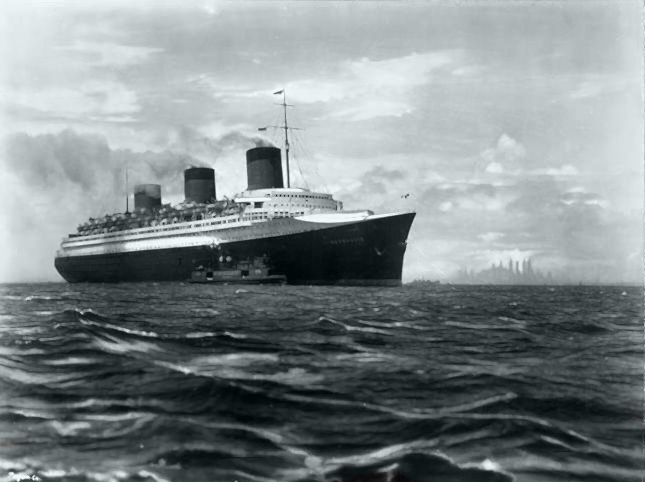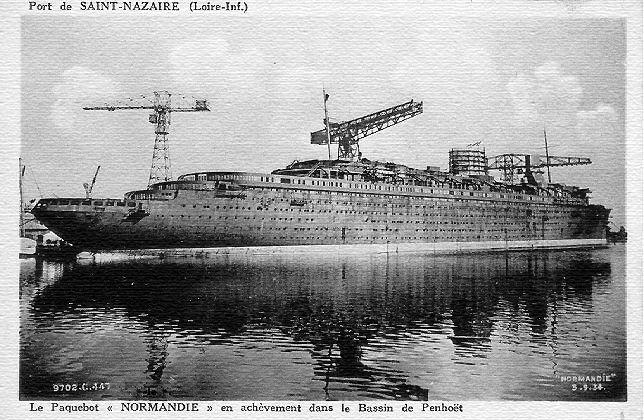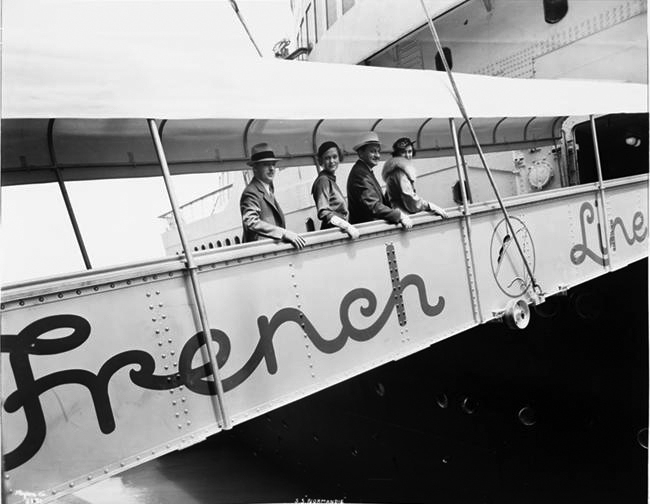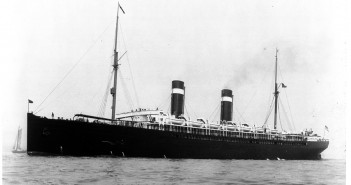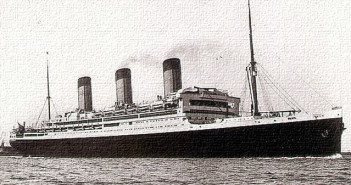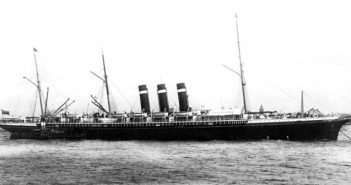On 29 October 1932, at the Chantiers et Ateliers de St. Nazaire shipyard, an estimated 60,000 spectators gathered to see the launch of a legend—Normandie.
Normandie was christened by Madame Andre Lebrun, wife of Albert Lebrun, the President of the French Republic. As the 27,567-ton hull slid into the Loire, the wave washed over several hundred people. Fortunately, there were no serious injuries.
Arguably the greatest ocean liner ever, Normandie was the first liner longer than 1,000 feet (1,029 feet) and the first liner to exceed 60,000 tons (79,280 GRT and 83,423 GRT after a 1935-36 overhaul to correct a bad vibration problem).
Yet Normandie was much more than a form of ocean conveyance, she was literally a floating work of art. So much so, that shoreside architects borrowed liberally and unapologetically from her form and style.
Virtually everything about Normandie was state of the art (even before the term was invented). Her luxurious interiors were designed in Art Deco and Streamline Moderne style. An innovative hull enabled the liner to travel faster while using less power than other large liners. Turbo generators and electric propulsion motors allowed Normandie to run in full power in both forward and reverse. A rudimentary type of radar supplemented human lookouts.
Normandie was everything an ocean liner should be: fast, beautiful, elegant and timeless. In old photos and newsreels, she seems almost dreamlike—too sublime to be real.
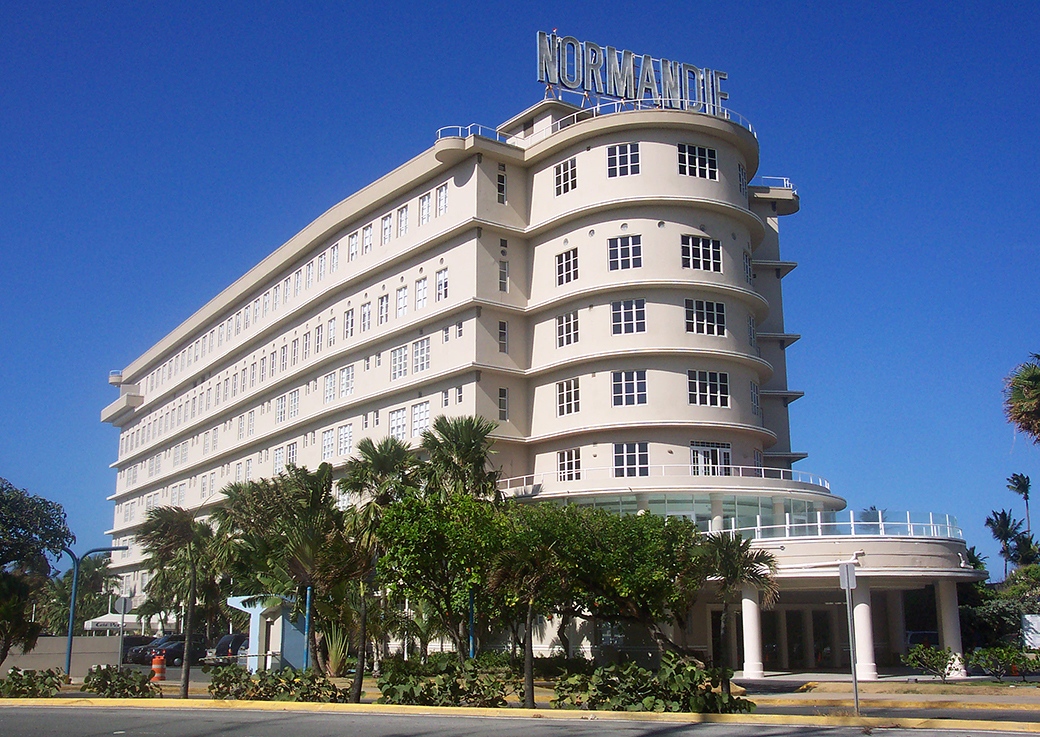
Like a dream, Normandie appeared, entranced and quickly departed. Her service life was less than four-and-a-half years, yet she will live forever.
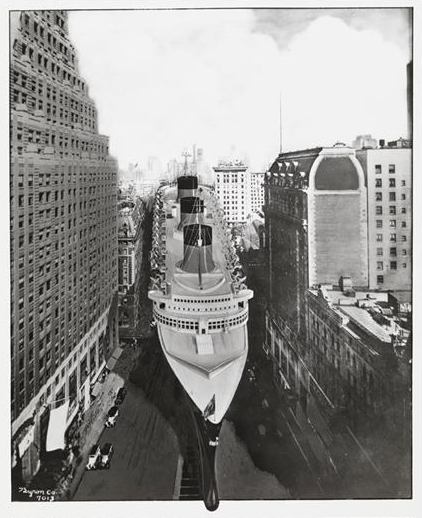
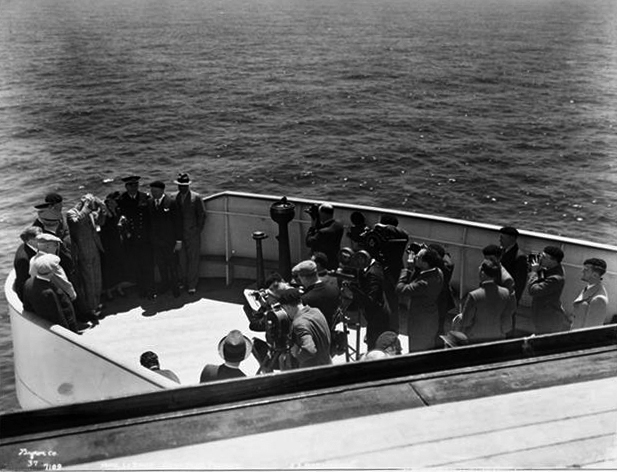

Please help keep Ocean Liners Magazine afloat. Any amount will be greatly appreciated.
—Regards, John Edwards, Editor/Publisher.


